Next week OMG! Yeh Mera India will shoot in Janwaar. They did an interview with me ahead of the shoot, it was recorded in Luz de Tavira, Portugal, where I am currently. Thank you Michael Sauer, Leading Interactive, for helping out and recording the interview. Here is a slightly polished transcript.
OMG! Yeh Mera India is not only the longest running, but also the most successful factual series in India. Their Youtube Channel has 3.3 million subscribers.
Here is the entire interview as a PDF file:
Transcript
What were the circumstances in which you arrived in Janwaar? How did you end up in Janwaar?
It could have been any other village in India – that I ended up in Janwaar was more or less coincidence. I was living in this area for almost one and a half years, I knew the area, the people and they knew me. One day the owner of the wildlife resort where I was staying asked me ,if I wouldn’t be willing to do “something” in his area. My first reaction – because I learned from an earlier experience – was: If you secure the land, why not? He replied that land is never an issue. I was thinking about his proposal for a while and one day I asked him: “Why don’t we build a skatepark?” His reply was astonishing: “What is a skatepark?” I didn’t expect this. I showed him a video and he was immediately convinced. He said: “”I liked the idea very much!”
Little did I know how different our understanding of the same thing was.
The landlord brought in a local business man from Panna – the next bigger town – who owned three properties in the area. I had a look at all the properties; two of them were in Panna town itself; I didn’t like them that much. The third property was seven, eight kilometres away, in the middle of nowhere. I lost orientation when we drove here. We ended up this tiny little village called Janwaar. When I saw the spot, when I saw the land – it immediately clicked. For me this piece of land had everything what Madhya Pradesh, Central India was all about. It was rough, beautiful, natural. This is how I came to Janwaar.
Why Janwaar?
Janwaar is like any other of the 700,000 villages in rural India. There is hardly any electricity, there is no sanitation, there is basically no infrastructure. 1000 maybe 1200 people are living there. It’s divided by the caste Yadav and Adivasi (tribals). They are strictly separated in the village. There are two government schools: 1-4th grade and 5th -8th grade. 80% of the people live below the poverty line.
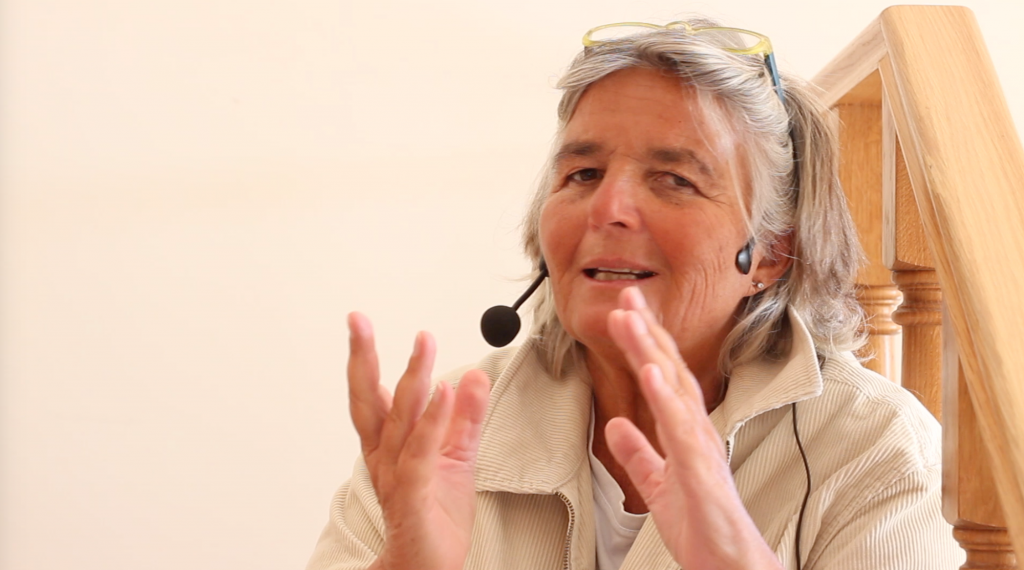
What were the circumstances in Janwaar that led you to start the skateboarding program for kids?
When we started to build the skatepark, the people in the village had no idea what we were building. There were the wildest theories – from a swimming pool to some kind of sports stadium. Everything was in there. We were working together with the local people, many of them are day labourers. For them it meant three to four months income.That was the main reason they came. They didn’t had to go anywhere to make money, they simply could come in the morning and work. This was a rare occasion. Together with seven or eight skateboarders from around the world they were working on a daily basis. But as I said, they didn’t really know what they were building. Slowly, slowly they saw these ramps coming up and they got a very basic idea. Even though we had shown them videos, they couldn’t connect the dots between what they saw and what they were building.
Why did you focus on skateboarding, a sport that the kids would know nothing about?
For me, skateboarding is like no other sport. It has a very, very strong culture. Wherever you go in the world, the skateboarders “tick” the same way. It’s all about counterculture. It’s all about being against the mainstream, finding your own way. Skateboarding basically has everything which this village does not have. So my basic theory was, that something would happen if I bring these two extremes together. I wasn’t sure what would happen, but if these two very, very extreme cultures would clash, we would generate movement. Disruption. The village got out of balance, it started to move. And you need movement to drive change.
And I think this wouldn’t have happened with cricket or any other sport. It really has to do with this strong, strong skateboarding culture.
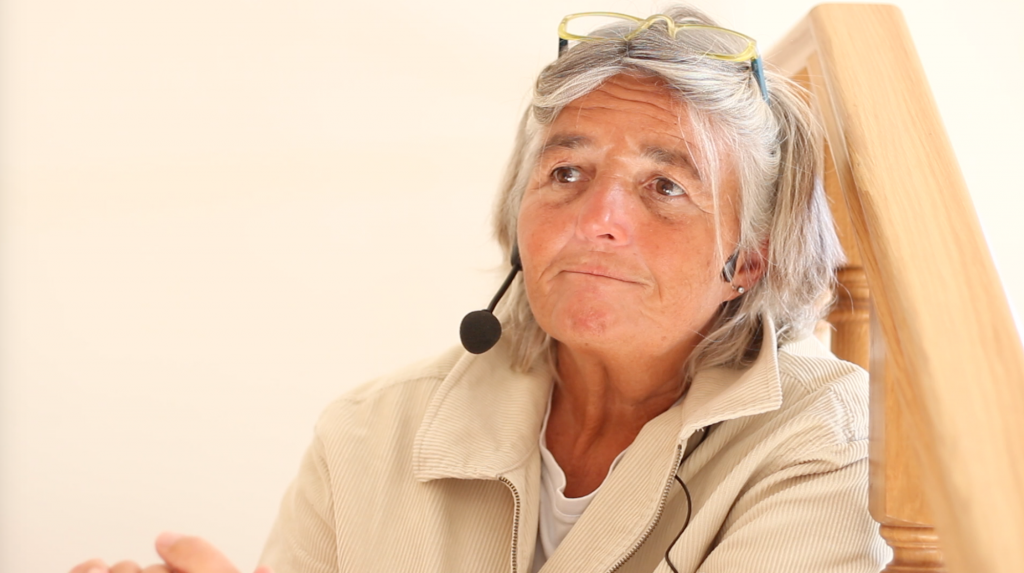
How did the children respond to skateboarding?
When we started the skatepark, a German sponsor, skate-aid, provided us with 20 skateboards. I gave them to the kids. I couldn’t show them how to skateboard because I simply do not know. Instead I downloaded YouTube videos on tablets and I showed the videos to the kids and said: “This is how you do it!” It worked! The kids looked at the videos, they took the skateboard to the skatepark, and then they were trying to do the things they’d seen. Five, 10 times the same trick, and if it didn’t work out, they went back, they looked on the YouTube video again and then they simply started to do the same trick over and over again. They never got tired of it. They failed many times … but at the end, they succeeded. I think for children, and also for young adults, skateboarding is very, very attractive. It’s a kind of a sexy sport, you can look at it, it looks great. It obviously gives the kids a great feeling. When you ask them, they would say I feel like flying or dancing or all these kinds of things, which are very, very positive. So it was very, very easy to to get the kids going.
And how did their parents respond to the initiative?
Very, very differently. We had all kinds of reactions. In the beginning only the Yadav (caste) boys would come, which is pretty normal for this society. Then their sisters would come and only then slowly, slowly, slowly the Adivasi were coming and wondering if they could give it a try, too. It took actually me to get the Adivasi going. And it also took us to get the girls going. We had from the very beginning two rules: “No school, no skateboarding!” And “Girls First!”. “No school, no skateboarding!” basically swamped the kids into the school. School attendance went up 30 to 50%. And it’s still like this today. So the school is packed, especially with young Adivasi kids. Our second rule is “Girls first!”. Whenever a girl wanted a skateboard, all she needed to say was “Girls first!” and the guy would give her the skateboard. This is the same still today, at least when we are around.
Once they came, they felt that at the skatepark was something different than they what they would experience at home. The boys talked to the girls, there was interaction between caste – and the kids brought this home, and were demanding, we want to go to the skatepark. So automatically via the kids, we got access to the parents.
We had ongoing conversations with the parents depending on how the kid was willing to come or not to come. I’ll give you one example, Asha. Asha came from the very beginning to the skatepark and I think I can say that Asha without skateboarding would be married today and probably would have one or two kids. Through skateboarding she really found her very own way. We had endless conversations with her parents until they finally decided yes, we let her go. She got a passport. She was the very first in the village to get a passport. And this was quite unusual because first she’s Adivasi and second, she’s a girl – quite unusual for such a setting. This sent again a message into the village: people are equal, they can go along with each other, even though they belong to different gender, different caste.
The conversations with the parents were manifold. Whenever a kid faced some kind of problem, they would come to us, we would go, and usually we would figure out a way that the parents were happy, and the kid.
What is the problem that you were addressing through the skateboarding program?
There wasn’t one specific problem we wanted to address. Our approach is quite different from other NGOs. We have the vision to make the village a better place – and the skatepark was the trigger. How we would reach this goal we left to the villagers themselves. They showed us the way. We provided this open space, the skatepark, and from there everything evolved. We only helped to get these things implemented the kids and / or the villagers wanted. Let it be that the kids, because of our rule “No school, no skateboarding”, were all of a sudden interested in learning. They started traveling. They came up with home stays for our guests. Now a couple of parents have home stays. Some kids were addressing the waste issue. Whatever the kids and the parents came up with, we helped them to implement and realise it. We never ever had a predefined program, what we were planning to do, we simply provided the space and out of this space – the skatepark – everything grew. We believe this approach is much more sustainable – a word I actually hate – than the approach to push a “one size fits all” program into a village.
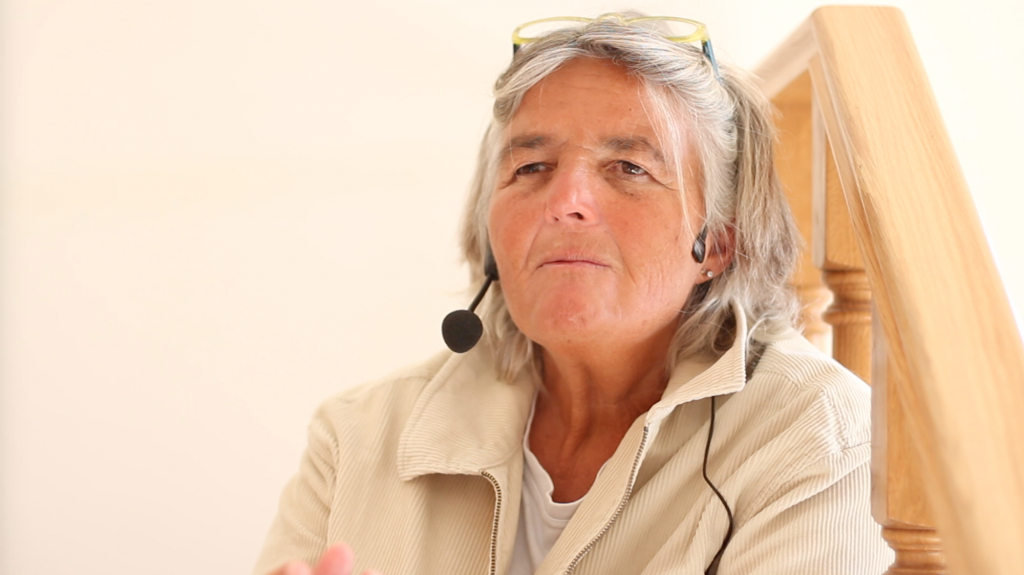
What was the impact of the program on the problem (encouraging kids to go to school, bridging the caste divide, breaking gender stereotypes) you were addressing?
The impact we see today is social, cultural and economic. Let’s start with the latter. A few families – as I said earlier – now have home stays. These home stays – when there is no Covid – double the income of these families. When you live below or just above the poverty line doubling your income– this is it’s quite remarkable. We have a bicycle rental station. One family has four bicycles, which they rent out to visitors also for this family, there is a clear economic impact! Two ladies are cleaning the Villa Janwaar, another man is teaching the kids to play the flute. He gets paid! All the visitors leave some money in the two or three little shops we have in the village, their sales increase. The social impact manifests itself that all of a sudden there is a conversation between the Yadav (caste) and the Adivasi. There is there is a kind of openness, which you hardly find in any other village in India. If foreigners or guests are arriving, they are welcome. People will not walk away, they will embrace the visitors. The culture, the mindset of the people, has changed. We have reached out to maybe 40-50% of the village and these people, especially the kids, they have started thinking differently. I think we are on the way to change village culture. People do think differently, that they do share common values – they have become proud of their village.
Tell us something about the rules you set up (no school, no skateboarding and girls first) for kids to use the skateboarding park?
I think it’s very important to have rules if you set up an open space such as the skatepark. With our two rules we tackled two problems which exist in any Indian village. The kids do not go to school because they have to work at home, or they have to work in the fields or they simply don’t want to go because parents and the kids do not understand what education is good for. So with our rule “No school, no skateboarding!” we really brought the kids into the school because they loved to skateboard. It was easy to “control” so to speak because any kid would say, well, he or she wasn’t at school, hence he / she is not allowed to skateboard. Because there was a scarcity of skateboards any kid would tell us …. this was one important thing. The other big issue is gender equality. I haven’t seen one place in India where women have the same rights a man has. In villages like Janwaar, where girls still disappear because the family cannot pay for the dowry, I think it was important that we addressed this issue without naming it in particular. So with “Girls First!”, we assured that the girls would get skateboards as well. And over time, it really led to the fact that the girls became self confident. Today the girls speak up, they don’t stand behind the boys, they do take their stand.
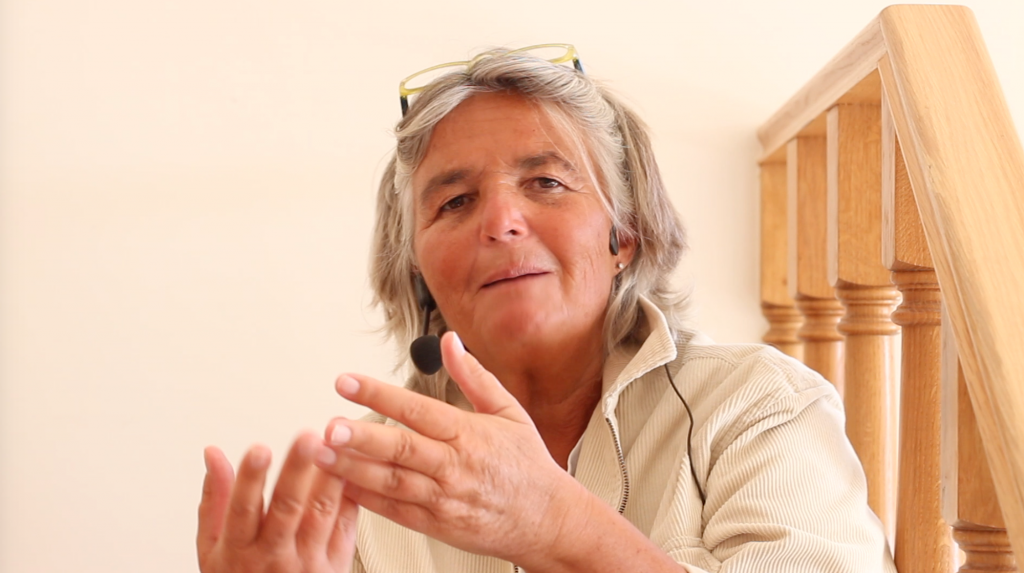
Tell us the challenges you faced in getting the skateboarding program off the ground?
We didn’t face any challenges from authorities. When you try a project like ours where you change culture, you have to learn that change is always incremental, it’s only happening in small steps. The old culture – separation by caste, separation by gender –will always fight back. It’s more a movement in waves. We know about these challenges, they are reoccurring, we’ve learned to deal with them. Every time we move a little bit forward. There was nothing so far, which really could have stopped us. Also because the villagers see that we bring better living conditions to the village, that the kids are really, really happy. At the end of the day, this is what parents want to see. They want to see their kids happy. They want to participate in the opportunities which are there because of skateboarding. This was so far enough to overcome these hurdles. I’m not saying that we don’t have any issues. The old system is firing back, but so far, we simply kept going.
Could you please tell us about some Individual achievements?
There are plenty but let me point out two or three. Asha is an Adivasi girl. As I mentioned earlier, she was the very first one who got a passport in the village. She was the first one to travel abroad. This was fascinating for me to slowly understand the difference in my and their perception, to understand the different realities we are living in. For me England is England. I have a very clear picture about its location, its people and so on. For Asha and Asha’s parents England didn’t mean anything. It was simply far far away, just like Delhi. There wasn’t this concept of different continents or countries. It’s just, Asha is going away, far away, to a place where they had no knowledge and no control of. They could not even imagine! This was really a big thing and today looking back, I am no longer wondering why it took so long to get the permission of Asha’s parents to let her go. On the same day the parents decided to let her go, they also promised Asha not to marry her. They kept their promise until today! This was four years ago – Asha is now 21 years old. Asha became a very self confident young woman. She is a role model for many other girls. She has really found her own way through skateboarding. She is now passing 10th grade exam, her interest in learning is there. She has set up a night school in the village. She’s teaching the other kids in our community center at Villa Janwaar. And she has participated in the World Championships in Skateboarding in China. When you see from where this girl came five years ago, and what she has experienced over the or within these five years, it’s quite a lot. Today, Asha has no issues to go on stage to tell her story, to tell how skateboarding has helped her to live her life. Other kids are following her example. Up to now, she’s really the one standing out.
On the boys’ side, there are Arun and Anil, two brothers. Arun is certainly one of our best skateboarders. He takes care of all the little kids, he is giving skateboarding sessions. He has also been Indian champion, just like Asha has been Indian champion. Arun also went to China to the World Championships. He’s travelled a lot, he became quite self confident as well. Yet he still has to learn that education, schooling is something worth doing. He has achieved that his father has stopped drinking. His family through the home stay is much, much better off than they used to be five years ago, and this really goes back to Arun.
Arun’s little brother Anil, is the only one in the village who has really understood what academic learning is all about. And he is really into learning. He has become a homeschooler. He has mentors and teachers from all around the world who zoom in or Skype in with him. He’s doing worksheets, he’s really preparing for the 10th grade exams, and he, I assume, is the only one who will make it. He has really an understanding what learning is all about. He has started to think in concepts. He’s also a good skateboarder. He’s still a bit young, he’s 15 years old, but I clearly see his potential and he has won credibility within the family because he has learned to withstand his older brother, which is a big, big thing in this society.
Besides these three there are at least 20 other kids, girls and boys, who join very regularly our activities in the Villa Janwaar or at the skatepark. These kids, some of them can hardly walk because they are too small, but they sit on the skateboard and they flip through the books in the Villa. They see that other kids are learning so they grow up in a quite different environment than any other kid has been growing up there before. The younger kids try to step in the footsteps of Asha, Arun and Anil, and follow their examples. This change of mindset, this change in the behaviour of the children, will lead in the next five to 10 years to a much more positive and engaging way to be.
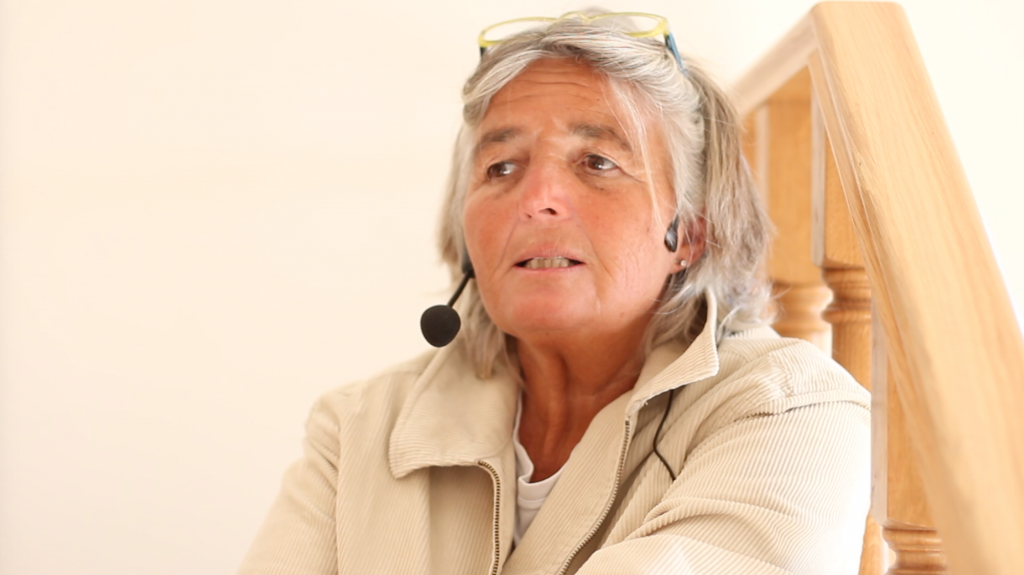
What is the way forward from here? Are their plans to use the success of this program and expand it to other communities?
The way forward is possible in multiple ways. We have set the ground for four other places in India. There are other NGOs, which were trying to copy our concept. We were directly involved in setting up the skateparks, we gave workshops. We went to all these places, we were trying to make them understand what the basic idea behind our skatepark was. This is crucial. It is for us important that they understand that we did not go into Janwaar with a predefined program, but that we used the skatepark as an open space from where things could evolve. So the idea has been replicated. And what we see in these various places is basically the same what we’ve been seeing when we started Janwaar Castle.
I said right from the beginning, that my job is done when I’m obsolete. Last year, the kids have set up their own section 8 company, the Barefoot Skateboarders Organization, where Asha, an Adivasi girl is director, and a Yadav boy is director, and there is only one adult in the room, who still takes care of the finances. The idea of the Barefoot Skateboarders Organization is, that the villagers themselves run the show and take over what I’ve been doing over the last five years. This organisation can provide various sources of income. With its legal structure, it provides a very democratic way of running the organisation. It gives the kids opportunities to earn money, to do skateboarding, what they really love, and to bring the entire village forward. These are two examples, and I would say the most important examples, how the story will continue …